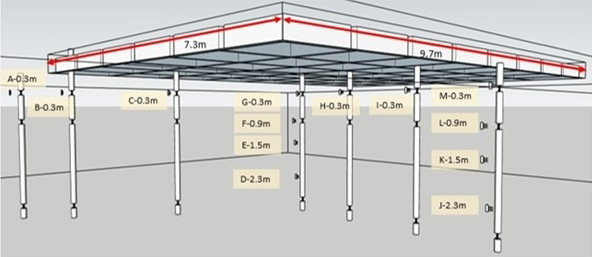By Wasantha Liyanage
Westies are all too familiar with the issue of cracked walls. Thousands of houses in the west of Melbourne experience severe cracking on a regular basis. An investigation by the Victorian Building Authority revealed that 5.3% of dwellings built in Melbourne’s western suburbs between 2003 and 2011 showed some form of distress. This has been a concern for existing and potential future residents living in the booming w est, where more homebuyers are heading.
Much of the issue is down to reactive soils which undergo significant volume changes due to the moisture content changes following seasonal weather changes – shrinking during the dry season and swelling during the wet season. This is a worldwide phenomenon and one of the common causes of structural damage to residential structures. In Australia, it is estimated that 20% of the surface soils can be classified as reactive. The western suburbs are largely covered with Newer Volcanic basaltic deposits, which are known to be highly reactive, explaining why house cracking issues are prevalent in the West.
Lightweight structures such as houses, whose foundations lie on shallow soil and whose self-weight is relatively low, are affected by seasonal ground movements that may lead to cracking and other structural issues.

With the aim of gaining an understanding of the seasonal changes of soil behaviour below foundations, our team constructed a fully instrumented model waffle-raft foundation on a highly reactive site in Sunshine North in the west of Melbourne. The instruments for soil temperature, soil moisture content and ground movement measurements were installed under the foundation at strategic locations and depths below the foundation.
The ~8m x ~10m test foundation will provide necessary insights into the soil behaviour underneath the foundation in response to seasonal weather changes. The extent of soil moisture and temperature changes dictates ground movements, resulting in impacts on the foundation. The current practice of residential foundation design relies on several assumptions, and the results of this study will shed light on validating them and establishing more reliable approaches for design procedures.
After one year of initial monitoring and analysis, we found that soil moisture content below the foundation fluctuates more than is commonly thought. In fact, it indicates potentially greater stresses than estimated are applied to foundations by reactive soils, and we suggest amendments to relevant Australian standards to ensure new constructions are safer, more sustainable, and long-lasting for residents in Melbourne’s west.
The research team acknowledges the support from the Victorian State Government, GEOID Consulting Engineers, and The Australian Reinforcing Company (ARC).

